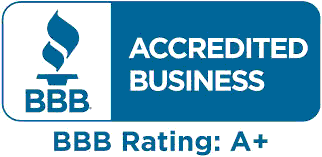Savings Strategies You Can Stick To (Really!)
Ever been on a crash diet? You know, the kind of over-the-top, no-food diet where you only eat a stalk of celery and a rice cake every day for a week? Diets like that can help you drop a few pounds – until you started eating like a normal person again, that is. As soon as you took a bite of actual food, you gain the weight back (with a few extra pounds for good measure).
I know. You’re wondering what dieting has to do with saving money, right?
Well, here’s the thing: A lot of us approach saving the same way we approach dieting – with unrealistic goals and super-restrictive rules that set us up for failure. You can’t live on celery for the rest of your life, and you can’t live on a budget that leaves you five bucks a month for groceries and no extra funds for the occasional dinner and a movie. You might save a few hundred dollars – until you try to live like a normal person again.
You probably see where I’m going with this. If you want to start saving more money, it’s a good idea to find ways to make realistic adjustments to your spending habits. Saving isn’t about deprivation – it’s about spending your money wisely and finding ways to get the most bang for your buck. Saving – like dieting – is all about making changes you can live with.
Need a few suggestions to help you get started? Here are some small lifestyle changes that can help put a big chunk of change in your bank account.
- Go generic. Next time you go grocery shopping, opt for the store brand instead of the national brand. Store brands are usually just as good as their national counterparts – in most cases, you’re just paying extra for fancy packaging.
But if you have to buy the national brand . . .
- Clip coupons. A half an hour with a pair of scissors and your Sunday paper can help trim a few dollars from your next grocery bill. Coupons are terrific money-savers – especially when paired with your grocery store’s sale prices and double- or triple-coupon events. But remember to use coupons wisely: If you use coupons to buy something you don’t need, you’re not really saving money.
- Cut out cable. Or at least cut it down. Cable or satellite TV services can get pretty pricy, especially if you’re paying for extra “premium” channels or pay-per-view sports events. Consider ditching the extra channels and going back to basics – depending on your cable company, you could save upwards of $20 every month. And if you really want to save big, get rid of cable altogether. Thanks to on-demand rental services like Netflix and websites like Hulu, you can watch your favorite movies and TV shows for a fraction of the price.
- Swap, don’t buy. Who needs the mall? Instead of going on a costly shopping spree, call a few friends and organize a swap party. Swap parties are easy to plan: Invite a few friends over and tell them to bring a box of gently used clothing, books, DVDs, or toys. Put on some music, break out the snacks, and start swapping. It’s a fun, frugal way to get some new stuff (and get rid of some old stuff) without breaking the bank.
- Make your bank work for you. Your bank account is a great source of wallet-friendly features. Free bill pay services can save you a few dollars on stamps every month, and some debit cards offer rewards or cash back on purchases. Want to make sure your savings account keeps growing? Put your savings on autopilot. Most banks have an automatic transfer service that will move a set amount of money from your checking account to your savings account. You don’t have to lift a finger.
- Ask for a better price. Seriously. Bargaining isn’t just for used cars. Whether you’re buying a new refrigerator or having your bathroom re-tiled, don’t be afraid to do a little haggling. Retailers and vendors can be surprisingly flexible when it comes to price. Before you break out your wallet, see if there’s any room for negotiation.
See what I mean about making small changes? Like I said, saving is a lot like dieting. Saving isn’t about depriving yourself of everything you enjoy. You’ll get the best results by making small, realistic adjustments like cutting out a few extra TV channels or buying store-brand toilet paper instead of the pricier national brand.
None of these strategies are dramatic. You probably won’t notice the extra $10 you save on stamps or the $20 you save on your cable bill. But when you add everything up, you’ll be surprised at how much extra cash you have at the end of the month.

 We offer FREE Debt Counseling. Get answers to lower or eliminate your debts.
We offer FREE Debt Counseling. Get answers to lower or eliminate your debts.
